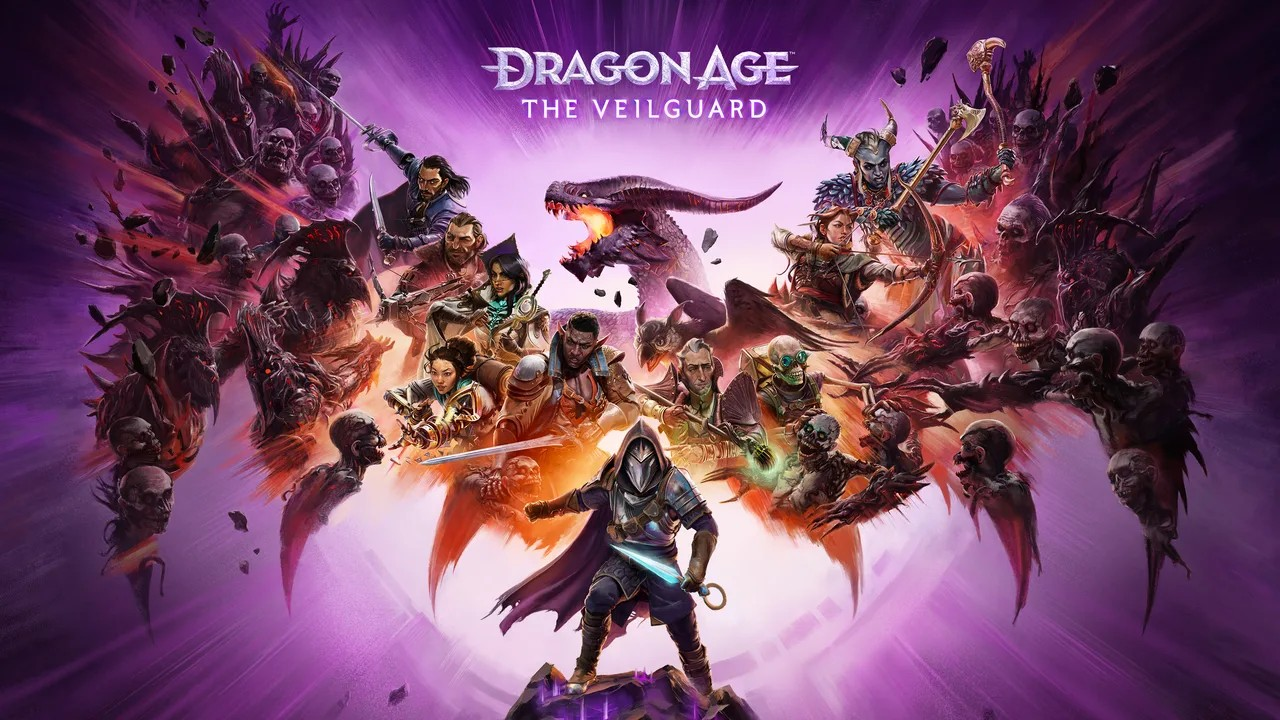10 years is a long time for most things in life, though for a AAA video game studio, it’s not as long as you’d think. A decade ago, BioWare swept up the Game of the Year thanks to the brilliant Dragon Age: Inquisition. This came during the ridiculous success of their other popular franchise Mass Effect, and everything looked rather rosy for the studio. The years that followed, however, brought us Mass Effect: Andromeda and the now infamous Anthem.
In the span of two years, BioWare’s reputation suffered substantially. As someone who spent 60+ hours in Andromeda, I certainly saw all the faults, but I still found enough of the spark to enjoy my time with it. Anthem… I simply couldn’t fathom trying. As hindsight now suggests, that decision was probably pretty vindicated. All of this is to say, it’s been a well-documented, rocky road for the development of Dragon Age: The Veilguard.
Given the well-documented hitches in development this game faced, it’s a relative miracle that Dragon Age: The Veilguard has made it to our PCs and consoles. Yet, much like the heroes and renegades of these tales, it persevered and found its way to the end. Is BioWare’s eventual return to Thedus a rapturous and harmonic squad of memorable beings, or does it fall foul of the Blight, succumbing to the Darkspawn altogether?
Back To Veil-ity
I made reference to Dragon Age: Inquisition with good reason. The best way I’ve found to describe and consider Veilguard is a slightly stripped-down, Marvel-ised version of that game. From the world-building, to companions, to combat and storytelling, almost every facet of Dragon Age: The Veilguard is a leaner version of what we were blessed with a decade ago. For some, that will be enough, for others, potentially preferable, for everyone else, it might not appeal.
The story picks up a few years after the success of the Inquisition in preventing the destruction of Thedas. Solas has since gone rogue, heralding the title of the Dread Wolf, threatening to destroy the Veil holding back all manner of demons. You enter this story as Rook, a newly acquired member of returning favourite Varric’s new crew, determined to try and stop Solas’ folly.
It continues so directly from Inquisition and the subsequent DLC that it works to Veilguard’s merit. However, what happens over the course of the roughly 30-40 hour story is less impressive. The majority of that time is filled with uninteresting busy work, chasing down random leads, building the party and thwarting a host of other threats. It eventually does come together in a genuinely epic concluding couple of final chapters, but if 90% of the story is relative fluff, it diminishes the impact and investment of the finale’s crucial elements.
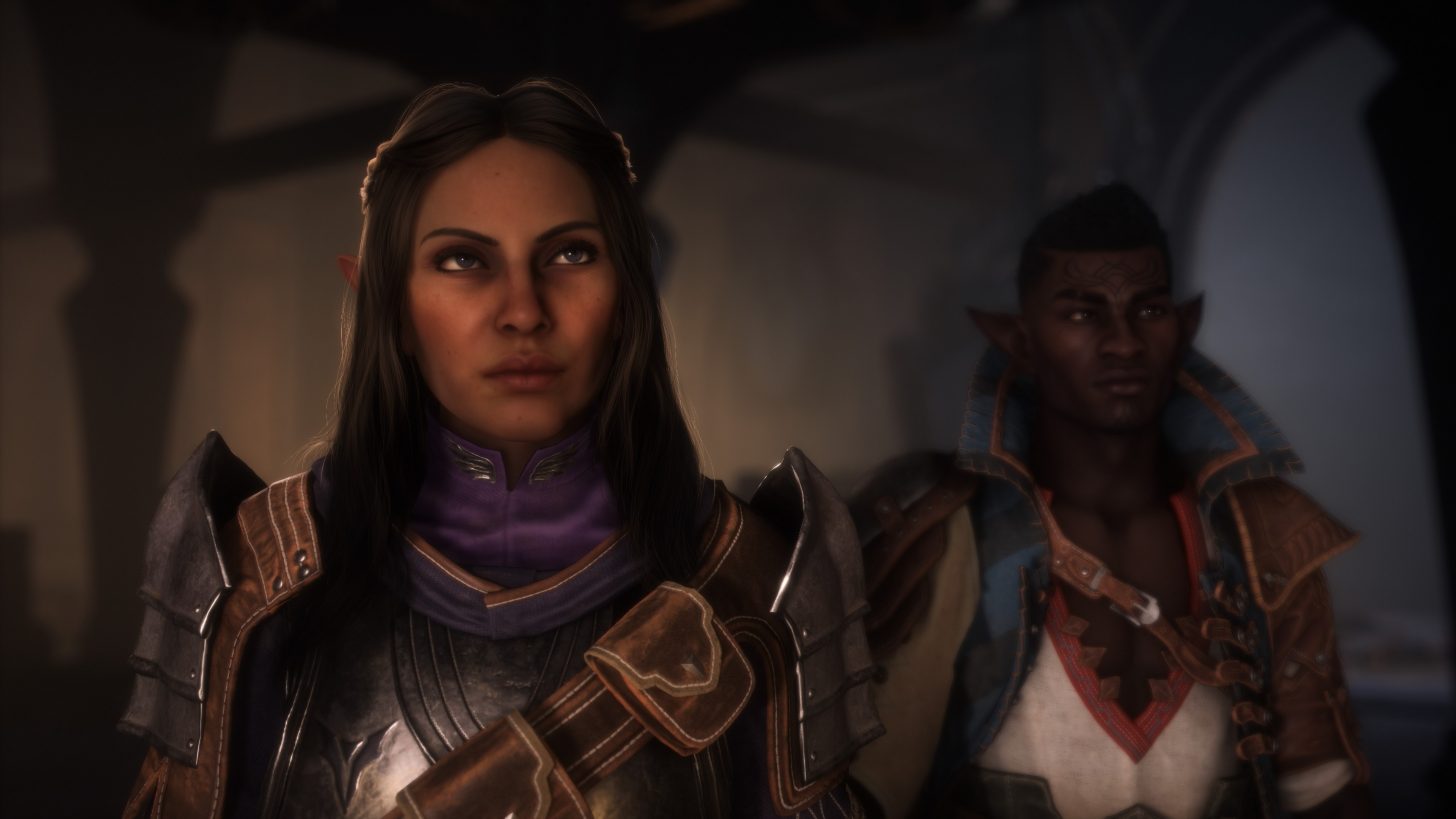
This Is Dragon On…
Much of my non-interest in Dragon Age: The Veilguard’s narrative comes from the lacklustre writing for much of the dialogue. Characters rarely speak to each other like actual people, and more like NPCs spouting their voice lines at each other, completely separated from the scene itself. I rolled my eyes with how many times I heard “I have a BAD feeling about this” or “We’re here for each other… as a team!”.
“Marvel-ised” is a term that’s been thrown around frequently in recent media, often referring to a change in direction from darker or moodier into light, fluffy or where every silence must be filled with comic relief. This felt somewhat apparent in Veilguard, in my view, but your dislike towards this may vary. Unlike Inquisition, I didn’t feel as closely invested in this group of companions, mainly because they’re not particularly interesting for the most part.
You’ve by now probably read a lot about Dragon Age: The Veilguard’s story and writing and while I certainly have my own problems with it and the directions that were taken, I didn’t hate it. In fact, I liked interacting with Bellara, Lucanis and Davrin in particular. The rest… not so much, but there are snippets of good writing in here. Unfortunately, they’re bogged down in hours of tedious nothing talk, which drowns out the better parts. However, they are in here and both the opening and closing of the main story do a great job of reminding us of the BioWare we loved from the 2010 era.
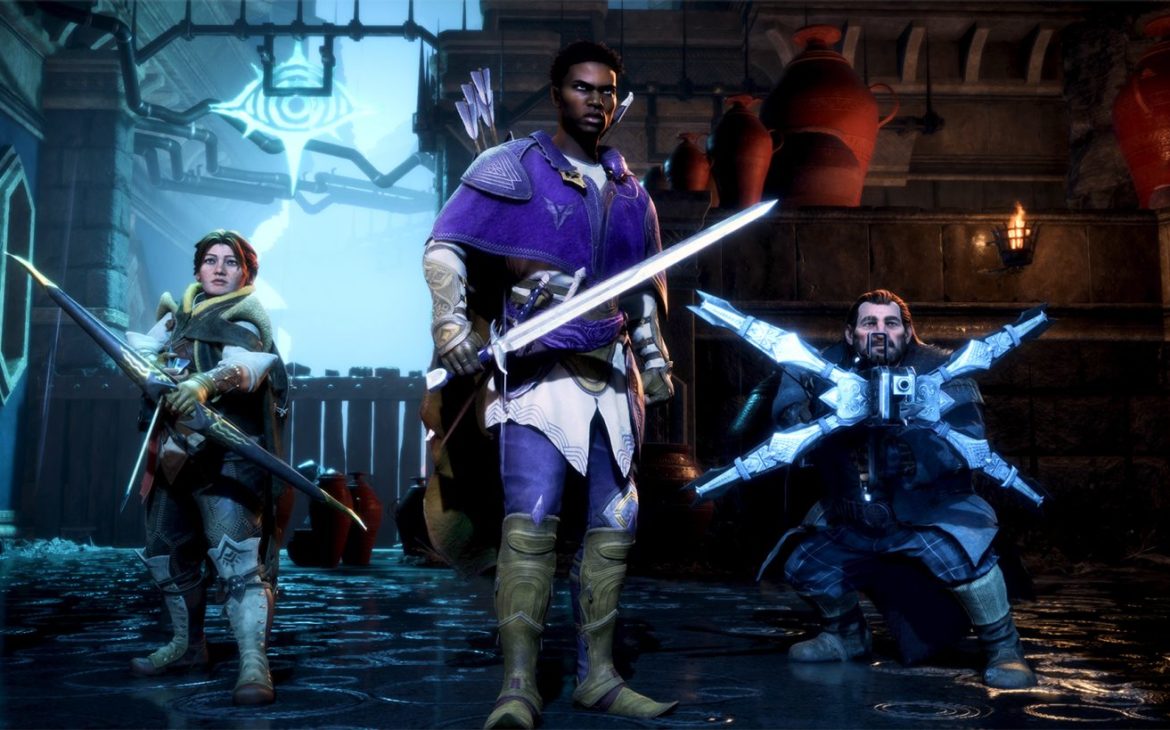
Age of Tempers
As an RPG, Dragon Age: The Veilguard leaves a bit to be desired too. The character creator tool for Rook is excellent and you can choose both their background (from a few factions) and their class (soldier, rogue or mage). At certain points, their background can be incorporated into decision-making but it’s barely noticeable and has little impact in terms of consequences.
Sadly, that’s a theme that permeates throughout BioWare’s latest entry – the lack of real decision-making or stakes. Very few of your choices particularly matter during most of your time spent with the game. Outcomes from story missions, side quests and even companion arcs don’t especially make a difference, aside from your own personal viewpoint on how a companion should handle their particular issue.
Once again, this is actually addressed quite well in the final few hours, where suddenly choices do have significant impacts and are important. My real question then is, why wasn’t this in the game earlier or sprinkled throughout the other 30 hours or so? I felt there was a lack of confidence or time that potentially affected how much they could do with the choice options for most of the game, but that is a theory. When they do kick in though, the choices are meaningful, but as an overall RPG, people coming from something like Baldur’s Gate 3 are going to be rather disappointed.
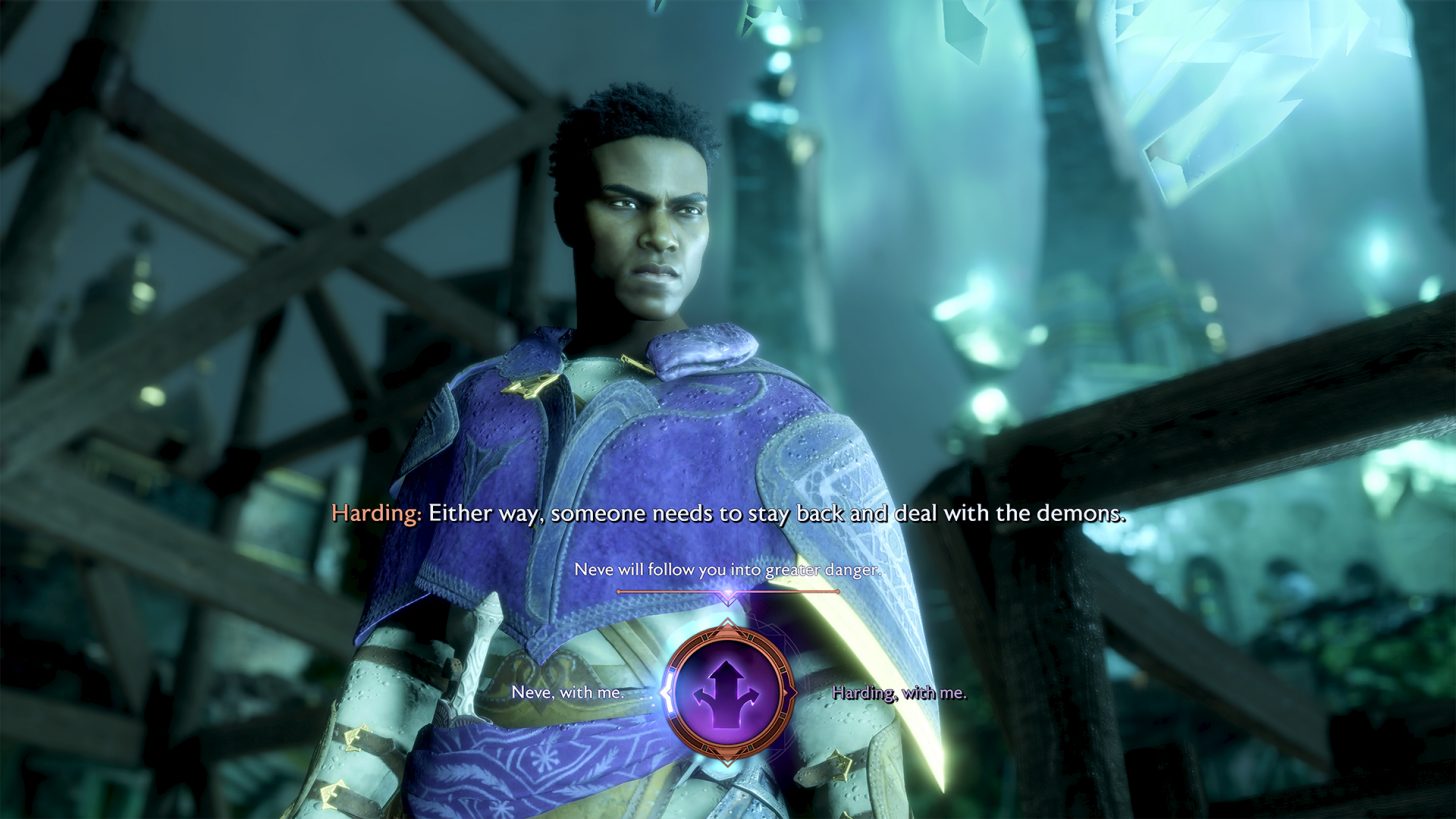
On Your Guard
It’s not just in the story and characters that Dragon Age: The Veilguard feels like a weaker Inquisition, it’s in the gameplay and combat too. Mechanically, this is a very simplistic and accessible action game. You have a light attack, heavy attack, tool (i.e. a bow), parry, dodge and up to three special abilities. Both your and your two accompanying companions’ abilities are accessed and targeted via a pop-up wheel or interface that you seamlessly open during encounters.
Veilguard’s straightforward approach to combat was stylish and easy to pick up. Rook will flow between opponents, landing strikes and firing off specials. It’s flashy and entertaining, for a little bit. Past about 10 hours though, it starts to wear thin. Enemies are often times damage sponges with no real challenge to their movesets or attacks, meaning they’re easy to defeat through patience or attrition, rather than actually being difficult.
I also struggled with the lack of variety. If, like me, you intend to complete all of the available content, you’ll be backtracking repeatedly to similar areas and killing wave after wave after wave of the same handful of factions. It quickly grows tiresome, and it’s not helped by the lack of any real modifiers to raise the mental challenge – a barrier you hit with your tool, armour you hit with heavy attacks. That’s virtually it. I didn’t even need nor want to change my abilities past the 15-hour mark, as the ones I had were just as good as any other, meaning there’s no value in respecing or trying different approaches. You just don’t need them.
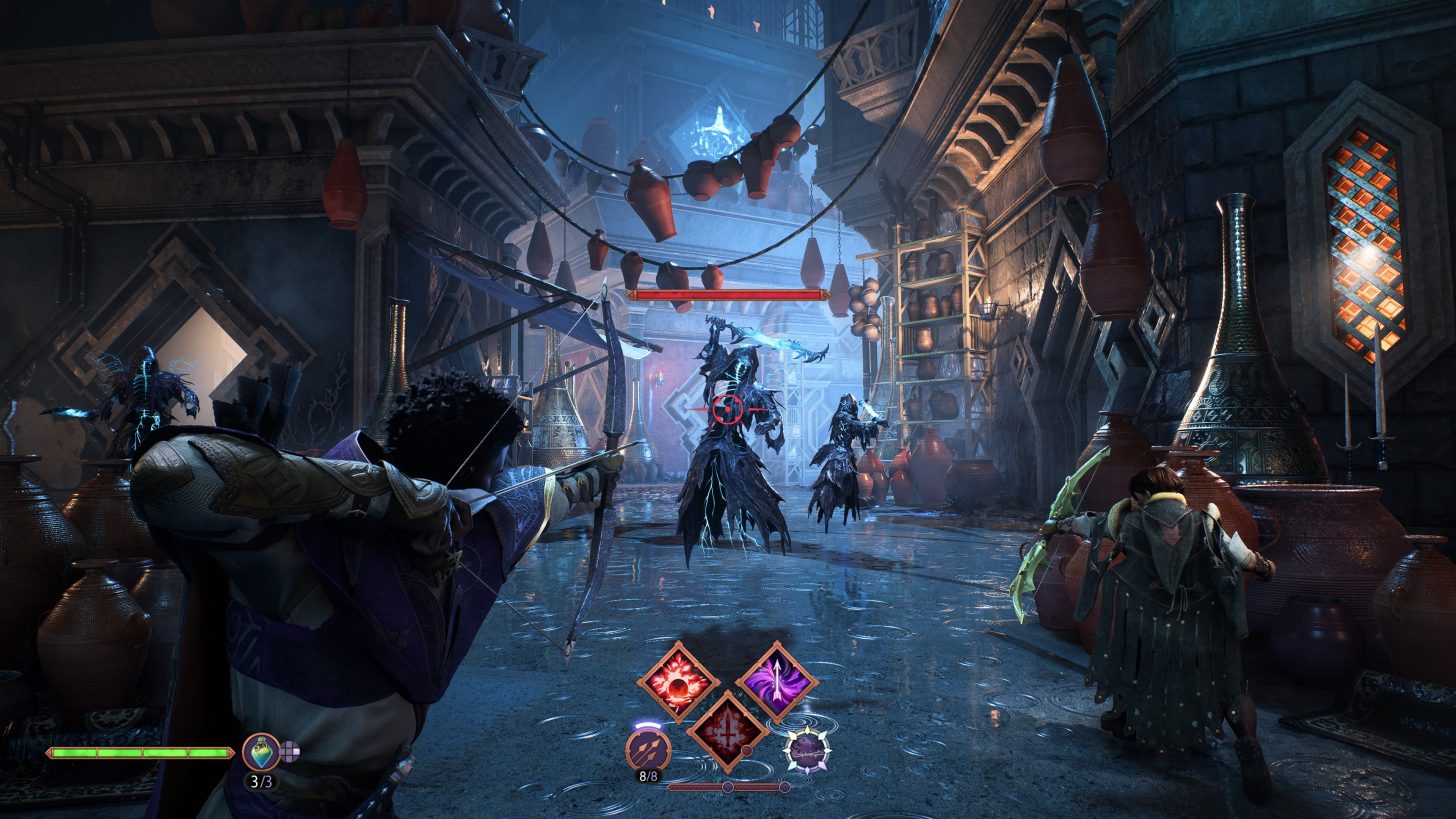
Pierce The Veil
Here’s the part where I think a lot of people will most differ – the exploration and quest design. Dragon Age: The Veilguard follows Inquisition’s structure of smaller, relatively linear hub spaces across Northern Thedas. Endless hallways, constant obstacles to mantle, ziplines to use, doors to open, chests to find and the like. Personally, I don’t mind a map to tick off and smugly laud upon when all the busy work is done. However, Veilguard does push its luck.
Puzzles in these areas are so rudimentary a toddler would likely solve them. Need an artifact to power a door? It’s literally right around the corner from it. Break some crystals to get through a blocked area? They’re all right in front of you. Many of these feel like time-killers or pace-stallers rather than actual puzzles and they’re positively awful towards your final third of the game.
What is better and more appreciated is the rewards for levelling up each faction associated with each area, completing the very occasional better puzzle and getting to the end to see everything ticked off nice and neat. There are additionally a couple of very well-executed boss fights that can only be found through discovery and finishing the optional content, which was welcome. I wouldn’t say I enjoyed searching all of these spaces overall, but they weren’t bad, either.
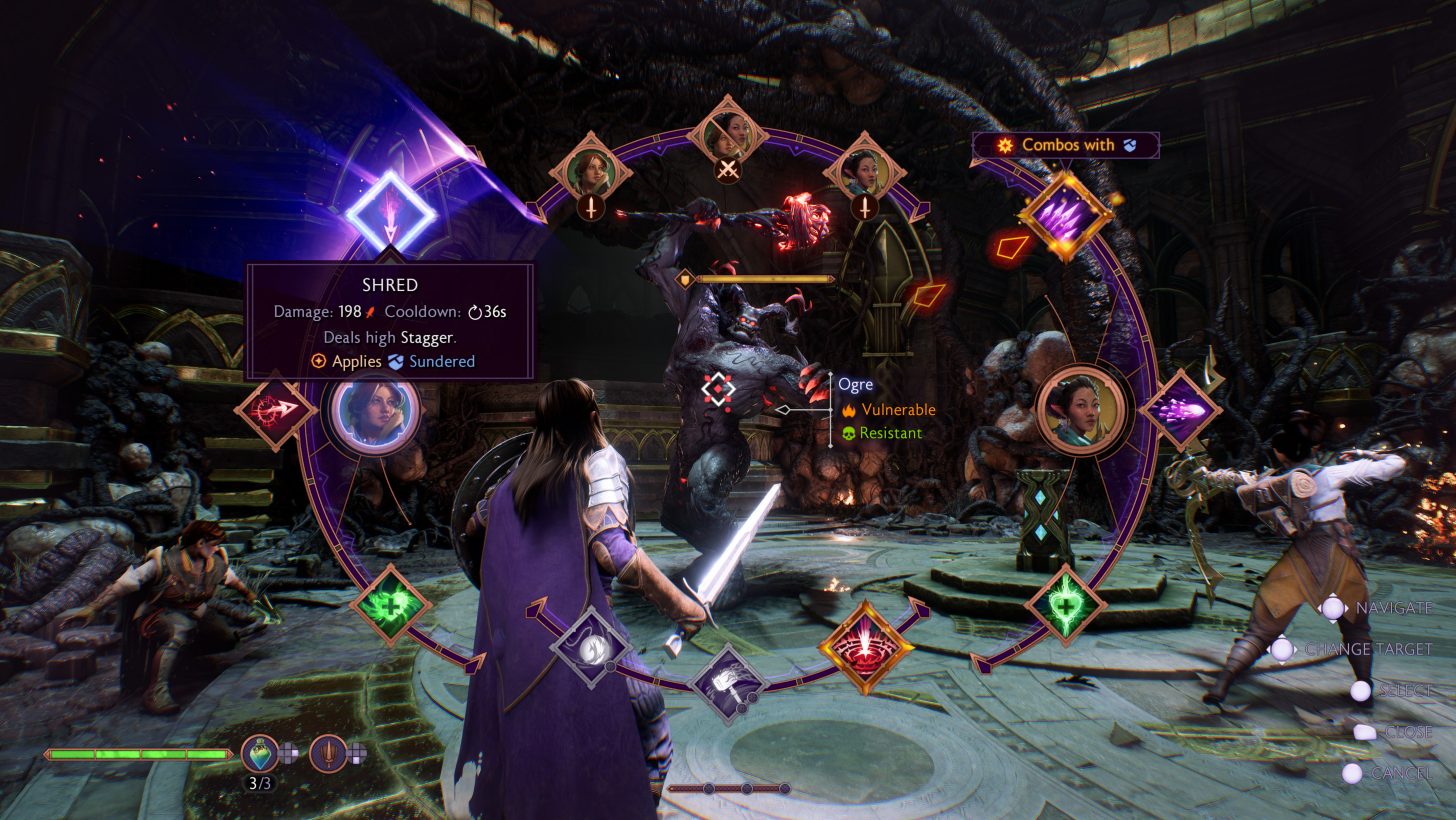
A Skill Issue?
Exploration, combat and quests will, as ever, reward you with XP and equipment for both you and your party. You’ll gain plenty of skill points through this and find optional statues (with another variant increasing your health), offering plenty to invest in the impressively wide skill tree. As I mentioned before however, combat is so basic and the options available aren’t compelling enough to make a particularly memorable one to invest in.
Being able to invest points in your companions as they increase their bond with you is a cool system, though. You can prioritise the abilities you use the most and once Bellara was a healing elf of yonder lore, I was virtually unstoppable. Combos return with companion abilities, which effectively rules out using any others (they all go on cooldown when one is used), so I found myself only levelling one or two and then keeping my party the exact same for the rest of the game too.
I’m aware this may be a personal element, whereby I play video games relatively efficiently. If something works and is super effective, I’m not fixing it, whether it’s broken or not. Perhaps if you’re a bit more intrinsically minded you’ll find a bit more entertainment from tinkering around. Compared to Inquisition or even Mass Effect: Andromeda, however, I couldn’t help but find the levelling, skills, equipment and progression rather light in terms of depth.
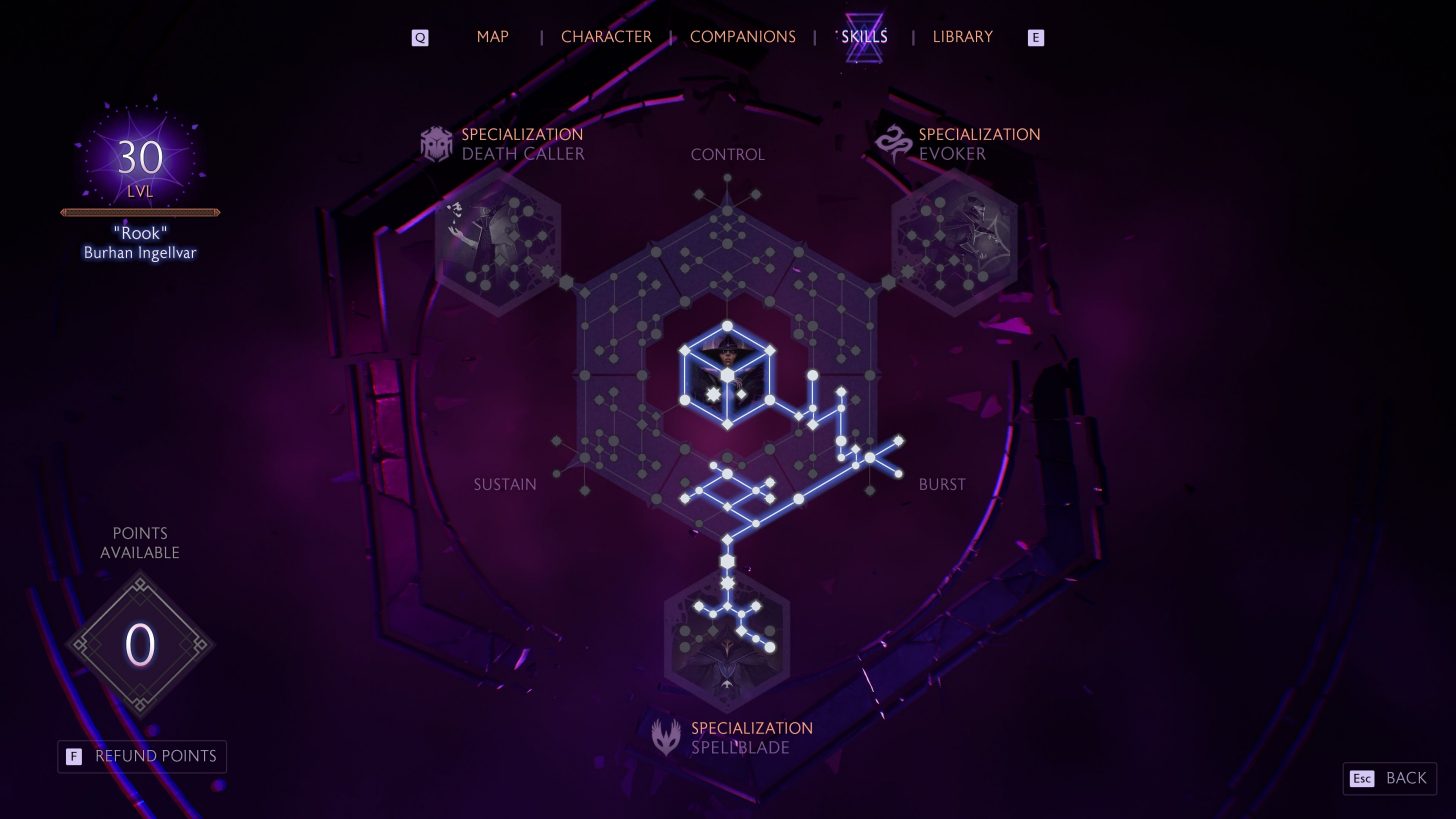
Beyond The Fade
While I’ve been relatively lukewarm on Dragon Age: The Veilguard thus far, I do want to spend some time lauding the visuals. Treviso was a wonderfully realised shady rooftop haven for the assassin-based Antivan Crows. The Rivain is awash with splendour of sunshine, sand and broken-down castles. During any given mission you’ll get to see all of the environmental and visual magic that BioWare have infused into making Thedas a marvel of a land to visit. The mages may not be hitting in-game, but BioWare’s spells certainly are.
Whether I was navigating a lava-flooded cave system, taking in a moment at the Minrathos docks or just peering out at a gigantic background mountain range, I was often left so impressed by the work of the development team. If there’s one aspect of Dragon Age: The Veilguard that’s an unmitigated success – it’s the ease with which they’ve made this realm a wonderful view. The vistas and areas are genuinely stunning.
That said, there are the usual BioWare wooden planks thrown onto that foundation. Rook’s face in particular can go awry in some dialogue. Characters often 90° turn during conversations in ways that… well, don’t look natural at all. The new look for characters has drawn some criticism, but in my view, they’re alright. While the overall graphics are pretty stellar, the character style and animation work still need some improvement, especially in an era of impressive spectacles.
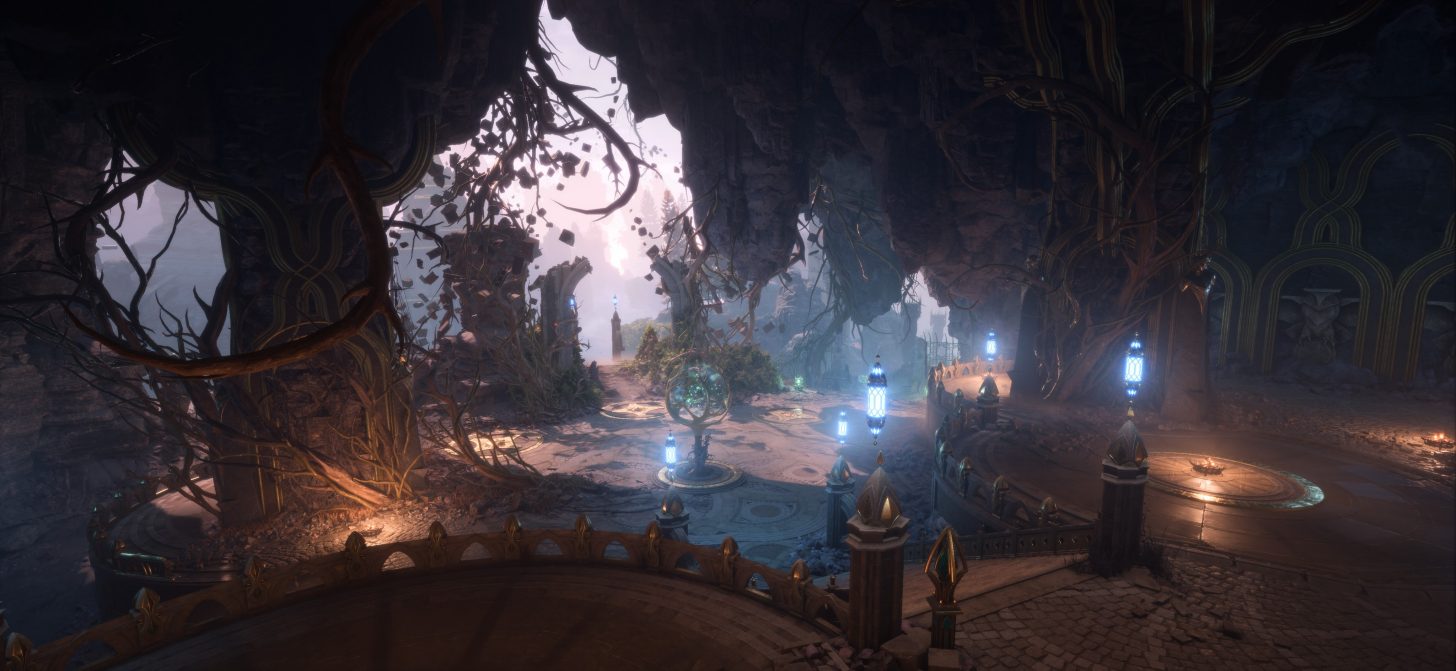
Bringing Up The Rear
In the 43 or so hours I spent completing and achieving the platinum for Dragon Age: The Veilguard, the majority of my thoughts consisted of “why am I not enjoying this?”. The sad truth I felt was that it’s because it’s relatively boring for a lot of its content. The last portion of the game actually shows how much potential there truly is in this franchise and in BioWare still. That’s the part I’m holding onto the most – the concept, and the ideas, were there, but so much of the execution falters.
However, I also want to emphasise that Veilguard is absolutely not a bad game. It’s well constructed, designed logically, has superb visuals and functions well for an action RPG. It’s when the complexity and depth of its various systems are compared to stellar experiences like Baldur’s Gate 3 or for example, Metaphor: ReFantazio, that its flaws are so ruthlessly exposed. Would I want to spend another 40 hours playing it again? Definitely not. Do I regret my time with it? Not entirely.
There’s a solid to decent video game in Dragon Age: The Veilguard. It would be a perfect place for a newcomer to the series to enter, or for someone who’s new to video games to try. It’s a straightforward and accessible title that’s probably attempting to cater to a wider audience than earlier Dragon Age or Mass Effect games. While it’s lower in the hierarchy in terms of quality for those series, I feel optimistic that it’s a stepping stone in the right direction for the studio after the debacle of Anthem. Not BioWare at their best, but the return of the Blight and Darkspawn shows the team still have it in them to put up a fight.
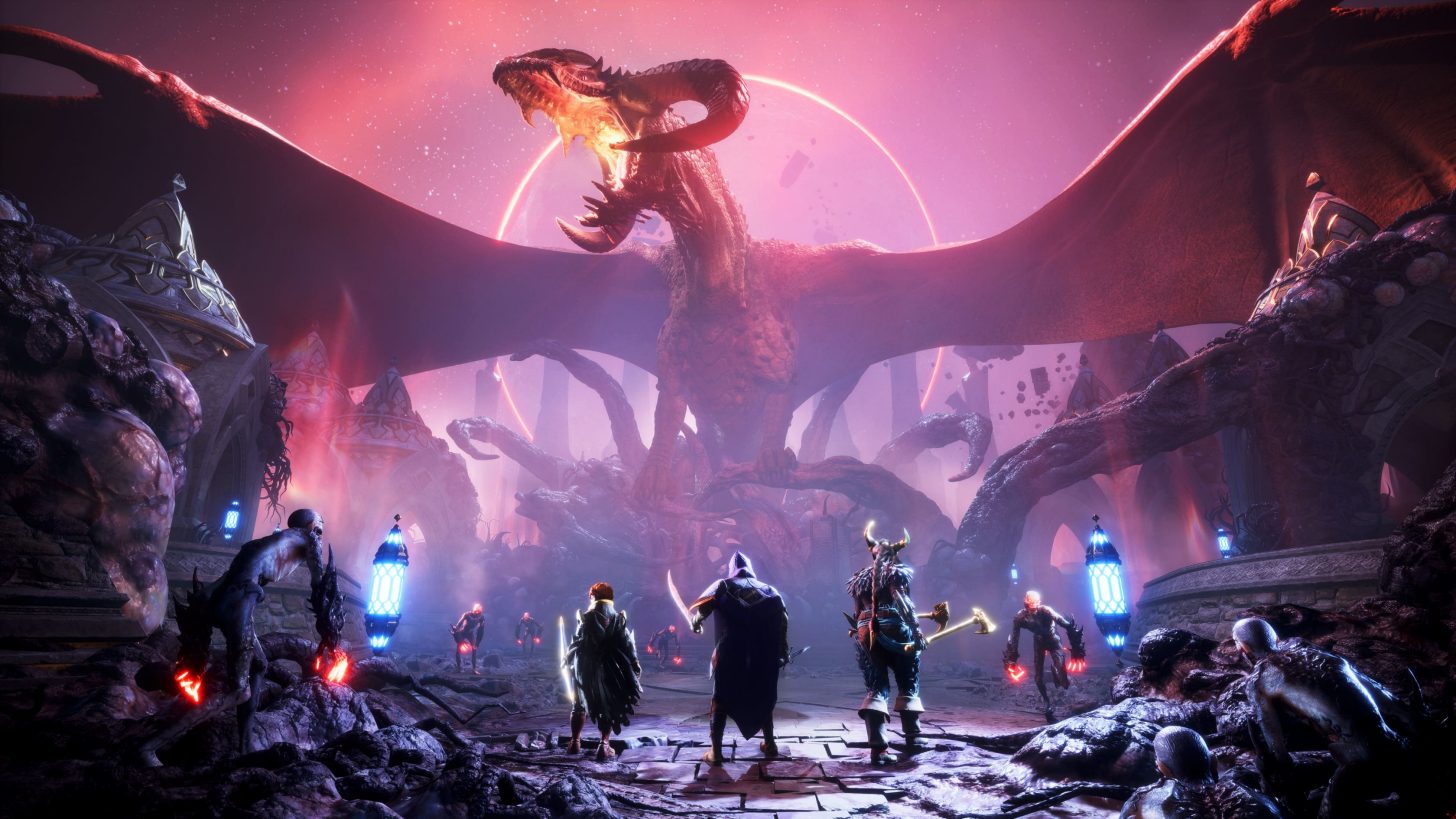
Dragon Age: The Veilguard is available now on PlayStation 5 (review platform), Xbox Series S/X and PC via Steam.
Developer: BioWare
Publisher: EA
Disclaimer: In order to complete this review, we were provided with a promotional copy of the game. For our full review policy, please go here.
If you enjoyed this article or any more of our content, please consider our Patreon.
Make sure to follow Finger Guns on our social channels –Twitter, Facebook, Twitch, Spotify or Apple Podcasts – to keep up to date on our news, reviews and features.
